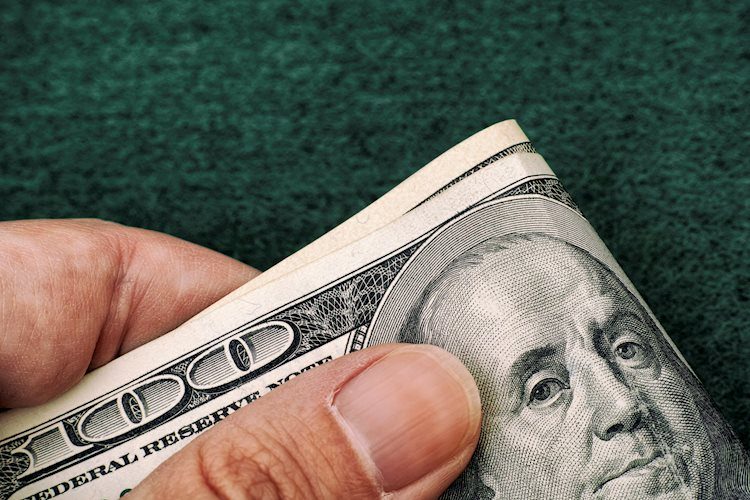
- US GDP Q1 revisions and increasing Jobless Claims affects USD negatively.
- Weekly Jobless Claims rose higher than expected.
- Markets look forward to PCE figures on Friday.
On Thursday, the US Dollar Index (DXY) experienced a retreat after a sharp recovery on Wednesday. The gains linked to the bond market surge on Wednesday are now being undone following the release of US Gross Domestic Product (GDP) revisions and soft Jobless Claims figures.
Despite some signs of a softening labor market, the likelihood of cuts in June and July remains low. However, there is heightened anticipation for the Personal Consumption Expenditure (PCE) figures due out on Friday, which have the potential to influence the next Federal Reserve (Fed) expectations.
Daily digest market movers: DXY retreats following disappointing data
- Investors are showing signs of nervousness with a disappointing GDP report due to signs of softening Consumer Spending. The headline GDP was revised to 1.3%.
- Markets eagerly anticipate PCE figures from April, which are due on Friday and could sway the Fed’s decisions.
- Unemployment data revealed an increase in Initial Jobless Claims from last week’s 216K to 219K.
- Despite the increased claims, odds of a cut for June and July remain low while standing around 50% for September.
DXY technical analysis: US Dollar struggles amid negative indicators
The DXY’s gains from Wednesday have been mostly trimmed in light of the less-than-favorable data for the US economy. The Relative Strength Index (RSI) is below the 50-level, indicating increased selling pressure and a shift in momentum. The index lost the 20-day Simple Moving Average (SMA), and the Moving Average Convergence Divergence (MACD) is showing red bars, signifying that bearish sentiment has returned.
Central banks FAQs
Central Banks have a key mandate which is making sure that there is price stability in a country or region. Economies are constantly facing inflation or deflation when prices for certain goods and services are fluctuating. Constant rising prices for the same goods means inflation, constant lowered prices for the same goods means deflation. It is the task of the central bank to keep the demand in line by tweaking its policy rate. For the biggest central banks like the US Federal Reserve (Fed), the European Central Bank (ECB) or the Bank of England (BoE), the mandate is to keep inflation close to 2%.
A central bank has one important tool at its disposal to get inflation higher or lower, and that is by tweaking its benchmark policy rate, commonly known as interest rate. On pre-communicated moments, the central bank will issue a statement with its policy rate and provide additional reasoning on why it is either remaining or changing (cutting or hiking) it. Local banks will adjust their savings and lending rates accordingly, which in turn will make it either harder or easier for people to earn on their savings or for companies to take out loans and make investments in their businesses. When the central bank hikes interest rates substantially, this is called monetary tightening. When it is cutting its benchmark rate, it is called monetary easing.
A central bank is often politically independent. Members of the central bank policy board are passing through a series of panels and hearings before being appointed to a policy board seat. Each member in that board often has a certain conviction on how the central bank should control inflation and the subsequent monetary policy. Members that want a very loose monetary policy, with low rates and cheap lending, to boost the economy substantially while being content to see inflation slightly above 2%, are called ‘doves’. Members that rather want to see higher rates to reward savings and want to keep a lit on inflation at all time are called ‘hawks’ and will not rest until inflation is at or just below 2%.
Normally, there is a chairman or president who leads each meeting, needs to create a consensus between the hawks or doves and has his or her final say when it would come down to a vote split to avoid a 50-50 tie on whether the current policy should be adjusted. The chairman will deliver speeches which often can be followed live, where the current monetary stance and outlook is being communicated. A central bank will try to push forward its monetary policy without triggering violent swings in rates, equities, or its currency. All members of the central bank will channel their stance toward the markets in advance of a policy meeting event. A few days before a policy meeting takes place until the new policy has been communicated, members are forbidden to talk publicly. This is called the blackout period.